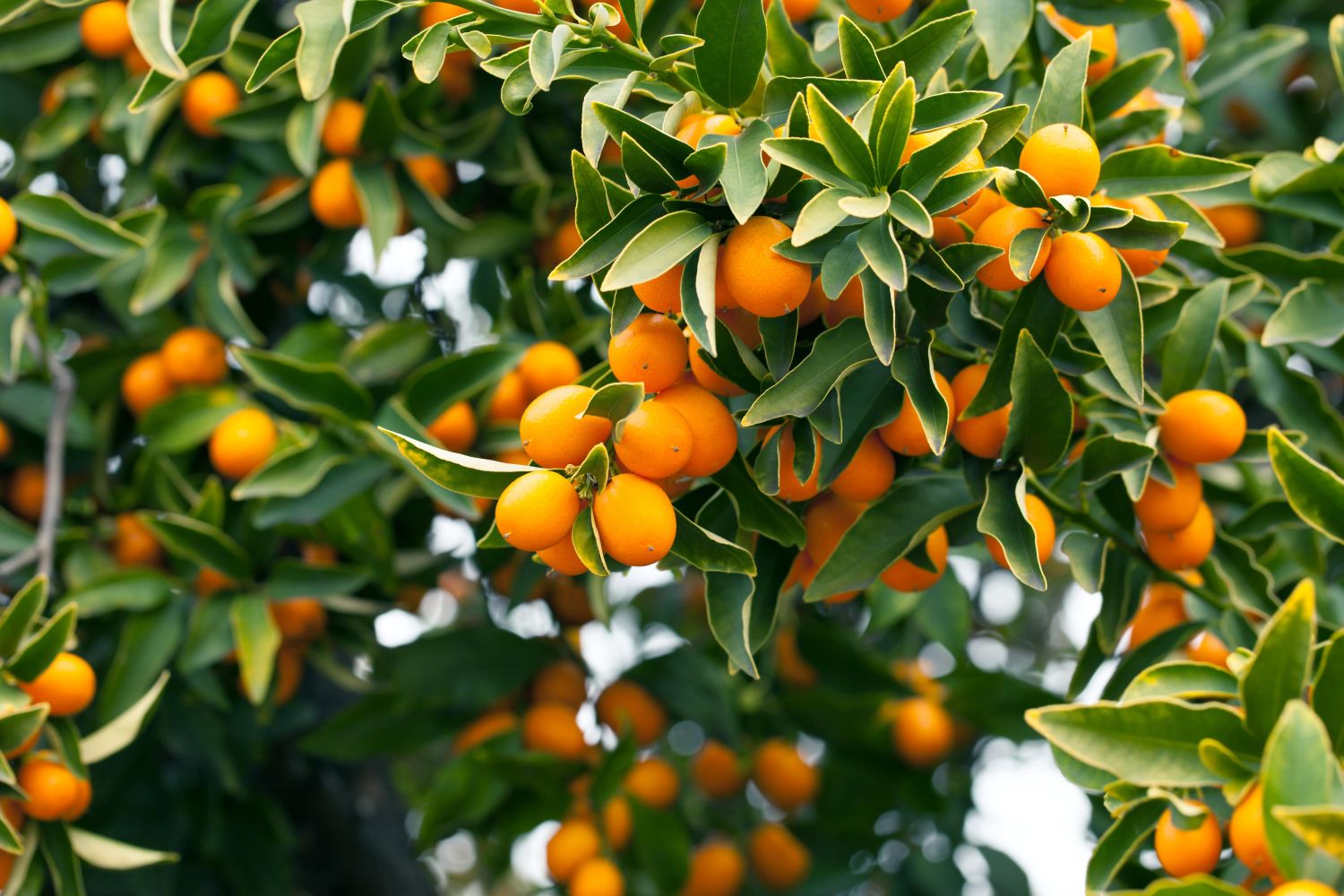
Kumquat
Citrus japonica
Basic Information
🌿 Family: Rutaceae🗺️ Zone: 8-11
Other Names:
- Fortunella japonica
- Fortunella margarita
🌡️ Ideal Temperature : 60°F°F – 85°F°F
🔥 Heat Tolerance: Up to 100°F°F
❄️ Cold Tolerance: Down to 18°F°F
🌱 Type: Perennial
Layers
- Shrub
Functions
- Edible
- Medicinal
- Pollinator
- Wildlife Attractor
- Border Plant
Pests
No pests associated with this plant.
Description
The Kumquat is a small, evergreen tree or shrub, typically reaching heights of 2.4 to 3.6 meters (8 to 12 feet). It features glossy, dark green leaves and bears fragrant white flowers, either singly or in clusters. The bright orange-yellow fruits are oval or round, measuring about 2.5 centimeters (1 inch) in diameter. Unique among citrus, the sweet, edible peel contrasts with the tart flesh, and the fruit is often consumed whole. Kumquats thrive in well-drained, sandy soils with a slightly acidic to neutral pH.
🌞💧 Sun and Water Requirements:
Kumquats require full sun exposure, needing at least 6 to 8 hours of direct sunlight daily. They prefer consistent moisture but are sensitive to waterlogged conditions. Regular watering is essential, especially during dry periods, to maintain soil moisture without oversaturation.
✂️🫘 Methods to Propagate:
Propagation is commonly achieved through grafting onto compatible rootstocks to ensure desired fruit characteristics and disease resistance. Seed propagation is possible but may not produce true-to-type plants and can result in variable fruit quality.
🧑🌾👩🌾 When to Harvest:
Harvesting typically occurs from late fall to early spring, depending on the variety and local climate. Fruits are ready to pick when they have developed full coloration and detach easily from the branch with a gentle twist.
Purpose
- Edible: Kumquats are consumed fresh, preserved, or used in culinary applications like marmalades, jellies, and chutneys. The entire fruit is edible, providing a balance of sweet and tart flavors.
- Medicinal: Rich in vitamin C and antioxidants, kumquats support immune health and have been used in traditional medicine to address digestive issues and colds.
- Pollinator: The fragrant white flowers attract bees and other pollinators, enhancing the pollination of nearby plants.
- Wildlife Attractor: The tree provides food and habitat for various bird species and beneficial insects, supporting local biodiversity.
- Border Plant: With its dense foliage and manageable size, kumquats are suitable for use as hedges or border plants in landscape design.